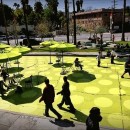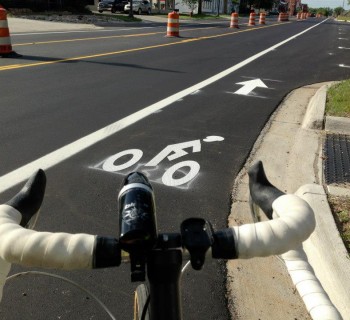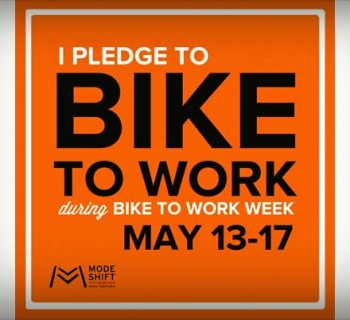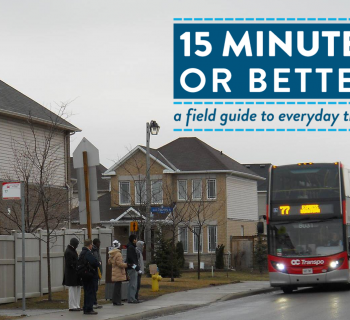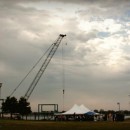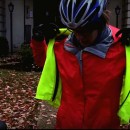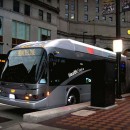DETROIT—The Woodward Avenue Action Association is hosting a three-day interactive community event in Birmingham and Bloomfield Hills -- including a “walking audit” -- May 20 – 22, as part of its Woodward Complete Streets master plan effort.
Although the upcoming event will focus on Birmingham and Bloomfield Hills, all Metro Detroit residents and other community stakeholders are encouraged to attend, because the mission of the WA3 is to improve the Woodward Ave. experience for everyone, from those who live along the corridor to regular or semi-regular visitors.
This event is the second in a series of five similar events, known as “charrettes,” that are scheduled in various communities along the Woodward corridor this summer.
WA3 is sponsoring the event in conjunction with the consulting firm Parsons Brinckerhoff and a Steering Group that includes representatives and lawmakers from Wayne and Oakland counties and the 11 municipalities along Woodward, plus the Michigan Department of Transportation, M1 Rail, the Southeast Michigan Council of Governments, and various advocacy groups.
The Woodward Complete Streets master planning initiative was conceived to make the entire 27-mile Woodward corridor more accessible for all users – from pedestrians and cyclists to mass-transit users and car drivers – and has been lauded as the largest and most ambitious Complete Streets planning effort ever undertaken in the U.S. or Canada.
The May 20-22 interactive event will include presentations, design sessions and the aforementioned walking audit led by Dan Burden of the Walkable and Livable Communities Institute. Burden has become known as a walkability guru for his work with many other communities on this issue.
That walkability audit with Burden will be from 9 a.m. to noon Tuesday, May 21.
The full three-day schedule is as follows:
- Monday, May 20: Community meeting and presentation from 5 - 7 p.m. Drop-in hours from 9 a.m. – 5 p.m.
- Tuesday, May 21: Walking Audit and Interactive Design Workshop from 9 a.m.- noon. Drop-in: Noon – 8 p.m.
- Wednesday, May 22: “Come hear what we have done”/Plan Concepts Presentation from 5 - 7 p.m. Drop-in: 9 a.m. – 5 p.m.
The event will be held at 555 S. Woodward (on the west side of the building, facing Old Woodward).
The walking audits, also known as walking workshops, “bring people of different and diverse backgrounds together to discover what is working in their neighborhood, and what is not, and then discuss ways to bring about positive change for the good of everyone,” says Burden, who in mid-May conducted a similar event in Kauai, Hawaii. Burden sees walkability as a “key cornerstone” to revitalizing a neighborhood or an important corridor like Woodward.
“People will not walk without destinations, such as a park, a good street, a corner store, or a nearby school,” stresses Burden. “People will not walk if they cannot get across their streets, or if buildings become run-down. As we altered our cities to support an abundance of (driving) lanes and parking bays, we lost sense of the importance of a street to be the place where people come together, to take ownership of their place.
“Walking and walkability are the cornerstone to good health – physically, mentally and emotionally….Walking engages not only the feet, heart and lungs, it also activates the mind, and allows for discovery, joy, and even romance…” An interactive community event like this one is also important because it teaches residents about the importance of community involvement, and encourages them to engage with others.
“They learn to work with one another, as opposed to what often happens in a city meeting -- arguing with one another,” offers Burden. “Towns need the social engagement of key leaders, staff and elected leaders, and they also need involved and engaged citizens to support the actions needed to help revitalize and strengthen a neighborhood.” These interactive events / walking audits are different from city to city, from neighborhood to neighborhood, depending on the layout of the neighborhood, and how walkable it currently is.
But all of them “use the lens of insight provided by the human foot, which gives a scale for how things work,” Burden says. “We watch how people use their street -- as a motorist, a pedestrian, or a bicyclist. We learn how noisy traffic is in one intersection, and how quiet it is in another. People begin to see with a common eye, then tackle real problems, rather than those that are (just) perceived.”
The Complete Streets Initiative for Woodward Avenue was launched August 2011 when the WA3 got a $752,880 Federal Scenic Byway Grant to prepare a Complete Streets master plan for Woodward. In November 2012 the Complete Streets team chose Parsons Brinckerhoff to lead the development of the plan.
The Complete Streets plan is continuing to develop standards and policies to increase the livability of Woodward and its surrounding communities and business districts, says Jason Fowler, WA3’s economic development program manager. These charettes are part of the master plan’s public-outreach phase, which concludes in July. After that, “we’ll start drafting our recommendations,” says Fowler.
“For many decades in Michigan, transportation and engineering plans mostly focused on developing roads for cars,” says Fowler. “But I think that kind of focus has ostracized others, specifically walkers and cyclists, which has led to some negative outcomes, like declining business for retailers, and a safety hazard for walkers and cyclists.
“So, we want to make streets – and, in our case, specifically, Woodward – more usable for everyone. That will not only make Woodward more inviting to walkers and cyclists, but it will also have a positive impact on the local economic development, and even on property values.”
Fowler points out that having a main drag that is extremely “car-centric” results in “really only having one way to get to most businesses – by auto.” Which, he says, is detrimental to the local economy.
“If you look at the revival of the traditional Main Street in older American communities, the shops and other businesses on those streets are thriving, because they are also accessible by foot,” illustrates Fowler. “Those shops are more often prestigious, and have a higher quality of service, compared to those in a strip mall on a busy commercial road where the cars are going 50 miles an hour. If you’re walking past a shop, you see things you wouldn’t notice, and are more likely to walk in the door and make a purchase than if you were driving past a strip mall at that speed.”
One obvious incentive for making Woodward more accessible to more people – especially walkers and cyclists – is to help make people healthier, says Fowler. “Walking and cycling obviously are great exercise, so there’s that health benefit. But we’re also looking to reduce traffic, which will mean less tailpipe pollutants, and we’re looking at ways to mitigate storm water runoff, which would cut down on our exposure to other kinds of pollutants.”
An important centerpiece of the master plan is the ongoing study of having a dedicated, contiguous bike path for the entire length of Woodward. But no definite decisions have been made yet about exactly what approach will be used to accomplish that.
“Right now, riding a bike on Woodward can be very harried or dangerous, so a big part of this is to determine how to make that safer and easier,” says Fowler. “It could mean reducing or narrowing the driving lanes, or lowering the speed limit, or painting a line on the road to designate the bike lane, or maybe having the bike lane separated from traffic by a curb.
“So, there are a lot of possible solutions, but whatever the final recommendation is, making Woodward more bike-friendly, with a dedicated, contiguous bike path, is definitely a key to making Woodward more accessible overall.” Since Woodward spans all of those different communities, its characteristics morph again and again as one travels its full length. So, the challenges of making it more inviting can vary from town to town.
“The city of Detroit has an advantage in that most of it was laid out before cars became the primary mode of transport. But the northern suburbs thrived later, as the automobile became more dominant. So the challenges are greater outside of the city from a design aspect,” notes Fowler.
“Downtown Detroit and Midtown and the New Center area are already very walkable, but up around 6 or 7 Mile, Woodward is difficult to cross, and can be intimidating for pedestrians. The 11 and 12 Mile areas are walkable, but it gets tougher again at 13 and 14 Mile. So, the plan is going to be flexible, to adapt to each particular stretch of Woodward.”



